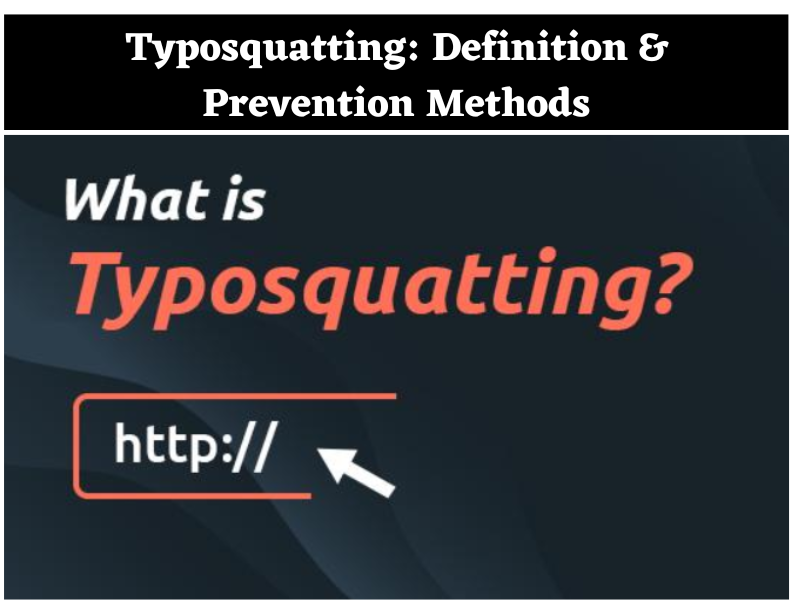Typosquatting, commonly known as URL hijacking, is a social engineering scam where hackers impersonate legitimate domains for fraud or spreading malware. Scammers register domain names similar to legitimate domains of targeted, trusted entities, hoping to fool people by making them believe that they are interacting with the actual organization.
Let’s understand it with an example, imagine that you’re an e-commerce customer. You go to your favorite website to buy something, but your order never arrives at your door. So, you contact the website, but they say they never got an order from you.
By checking your browser history, you realize you misspelled their website name. How did this happen? This is a case of typo-squatting or URL hijacking.
Let’s take another scenario, consider yourself to be the owner of a website named sunglasses.com, and you’re losing customers to a cleverly designed imposter website. That is not good for your revenue or your brand reputation.
Read this blog to solve your query of “What is typosquatting attack?” and “How to prevent typosquatting?”
Typosquatting Definition- Overview
In typo squatting, scammers register domain names with misspellings or typographical errors of famous brands, like “aebay.com” instead of “ebay.com.”
Web addresses are prone to typos, and infringers take advantage of internet users unaware of navigating an untrustworthy website. Usually, typos of domains lead to web-optimized landing pages of fake websites that generate profits for scammers or trick users into revealing their confidential data.
Google was the victim of a typo-squatting scam in 2006 by Goggle.com, which is widely considered a phishing/fraud site. Scammers also registered their URLs on domains like foogle.com, hoogle.com, boogle.com, yoogle.com, toogle.com, and roogle.com.
Typo-squatting can become a major cybersecurity risk if your business gets a large traffic volume. We’ve discussed Domain Typosquatting; now let’s see its various types.
What are the Different Types of Typosquatting
As you know, in typo squatting, scammers trick you by registering their domain names similar to some famous sites. Now let’s see in how many ways domain typosquatting can happen.
- Typing Error: In the very first way, typo-squatting happens when you mistype the web addresses of well-known brands in the address bar, such as “faacebook.com or redit.com.”
- Misspelling: Misspelled domains are a well-known phenomenon. It happens more quickly if your domain name is an invented word. For example, “gooogle.com.”
- Wrong domain extensions: The likelihood of typo-squatting sites increases with the number of top-level domain (TLD) names. A typical example of a domain extension error is typing “.com” instead of a “.org”
- Alternative spellings: Users can be easily misled by the abstract spelling of products, brand names, or services—for example, getphotos.com vs. getfotos.com.
- Combosquatting or Hyphenated domains: Using this method, scammers intentionally omit or add a hyphen to illegally direct traffic to their webpage, e.g., facebook.com vs. face-book.com.
- Supplementing popular brand domains: Names of well-known brands supplemented with appropriate words, produce a typosquatted domain name that sounds legitimate, e.g., apple-shop.com vs. apple.com.
- Impersonating www: wwwfacebook.com vs. www.facebook.com is a classic example of impersonation of the World Wide Web popularly known as www.
- Abusing Country Code Top-Level Domain (ccTLD): When a user types twitter.cm in their search box instead of twitter.com, he lands on the scammer’s site.
How to Prevent Typosquatting: Measures You can Take to Avoid Domain Typosquatting
Now that you are aware of the typosquatting definition and in how many ways typosquatters can target you. You’re wondering about measures you can take to prevent your business from typo squatting. Well, don’t worry about it; we’ve got it sorted. Let’s discuss some ways to get ahead of typosquatters:
Buying Similar Domains
You can avoid domain typosquatting by buying domain names similar to your website. They are relatively cheap and worth avoiding the headaches typo squatting can cause you. If you’re wondering which domain names you should buy, you can search for them in a tool that will tell you what traffic a domain is getting. Unless you’re a big organization, your misspelled domain names won’t have jarring traffic numbers. But with the help of a tool, you can at least get an idea of the most commonly misspelled variations.
With an EV SSL Certificate and Display Site Seals
Purchasing and installing an EV SSL certificate, you can make it easier for your users to identify your authentic website. Following a more extensive validation process, users can identify you via your certificate. An EV SSL certificate gives you more assurance than a DV or OV SSL certificate, which doesn’t show the details of your company clearly. EV SSL certificates come with a site seal, cementing you as a secure and trusted website. These visual indicators let your users quickly identify that they’re off a typo-squatting website.
Trademarking Your Brand Name
Trademarking is another way to combat typo-squatting attacks. It includes your brand names, tag lines, and logos. In the United States, trademarks are filed at the United States Patent and Trademark Office (USPTO). The trademark of your brand name will provide protection/recourse in the middle of a typosquatting lawsuit. Savvy typosquatters may be scared off by websites covered with trademarked brands. Instead of you, they’ll target someone who has not taken the proper steps to protect their brand. You can take the measures mentioned above to prevent typo-squatting, or you can also take the help of the professionals of Imagine IT.
Protect Your Brand from Typo-Squatting with the Help of Imagine IT!
Is the question “how to prevent typosquatting?” making you sweat? Get in touch with the professionals of Imagine IT. We provide a complete Cyber Security solution. Under our cyber security solution, your business is secured against typo squatting and against all other cyber security threats.
We at Imagine IT help organizations in taking better technical decisions. We do it with expertise, a team approach, and an understanding of the issue related to your business to fix it quickly and make it cyber-secure. Contact us Now!





